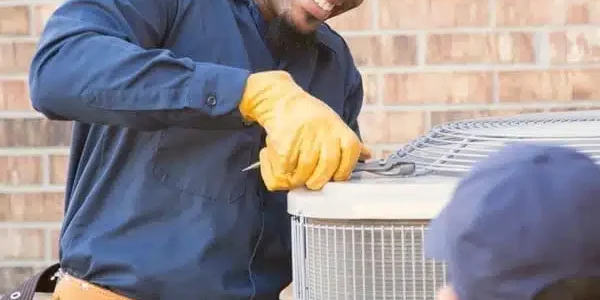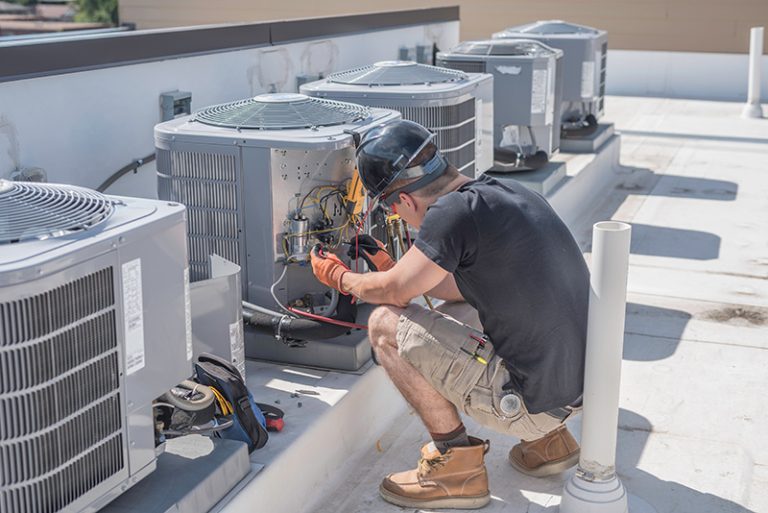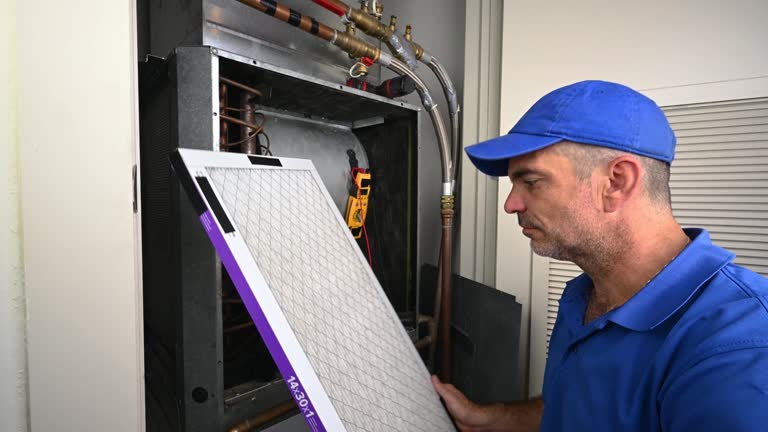
Your home is more than just a place to live—it’s an investment. Whether you’re a first-time homeowner or someone who’s lived in the same house for years, maintaining and repairing your home not only ensures that it remains a comfortable and safe sanctuary, but also helps to preserve or even increase its value. Over time, even the most well-built homes require attention, and knowing how to balance maintenance and repairs can significantly improve both the functionality and the aesthetic appeal of your property.
In this article, we will explore how regular maintenance and timely repairs can elevate your home, enhance its longevity, and help you create a living space that continues to meet your needs. From simple preventive tasks to more extensive repairs, we will provide valuable insights into the best practices for keeping your home in top shape.
1. Start with a Regular Maintenance Routine
Routine maintenance is the first line of defense against costly repairs and extensive renovations down the road. Much like servicing a car, regular maintenance can prevent major issues by addressing small problems before they become bigger ones. When you adopt a maintenance-first mindset, you can avoid unnecessary disruptions to your daily life and protect the overall value of your property.
Key Areas for Regular Home Maintenance:
-
HVAC System: Ensure that your heating, ventilation, and air conditioning system is operating efficiently by having it inspected and serviced at least once a year. Change filters regularly, check for leaks, and clean ducts. Proper HVAC maintenance not only improves comfort but also reduces energy consumption and extends the lifespan of the system.
-
Roof and Gutters: Your roof is the first line of defense against the elements, so keeping it in good shape is critical. Clean your gutters at least twice a year, especially before the rainy season, to prevent water damage or leaks. Look for missing shingles, moss, or any signs of wear and tear. These small fixes can prevent costly roof repairs or even replacements in the future.
-
Plumbing and Electrical Systems: Regularly inspect your plumbing for leaks, drips, or clogs, especially in areas like the kitchen, bathrooms, and laundry room. Similarly, check electrical outlets, switches, and appliances for potential hazards. Catching these issues early can save you from emergency repairs that disrupt your life and budget.
-
Exterior Maintenance: Periodically check for cracks in the driveway, sidewalks, or exterior walls. Over time, weather conditions can cause these surfaces to degrade, but a little maintenance—like filling cracks or resealing surfaces—can keep your home looking pristine and prevent more serious damage from developing.
2. Repair as Soon as Issues Arise
No matter how diligent you are about maintenance, issues will inevitably arise in any home. Whether it’s a leaking faucet, a faulty air conditioning unit, or a broken window, it’s important to address repairs as soon as they happen. Postponing repairs often leads to more significant problems that may require expensive solutions.
Common Repairs That Shouldn’t Be Delayed:
-
Water Damage: If you notice any signs of leaks, stains, or mold growth, address them immediately. Water damage can weaken the structure of your home, damage furniture, and create ideal conditions for mold. Even small leaks—if left untreated—can cause long-term damage that is expensive to fix.
-
Plumbing Leaks: A slow drip or an unexplained water spot may seem minor, but it can cause higher water bills and structural damage if left unchecked. Even minor plumbing issues can escalate, and a quick repair can prevent a much larger problem down the line.
-
Faulty HVAC Systems: If your air conditioning or heating system isn’t performing as it should, it’s important to schedule a repair as soon as possible. Prolonged poor performance can strain the system, leading to breakdowns and the need for costly repairs or replacements.
-
Broken Windows or Doors: Broken windows or doors compromise your home’s security and energy efficiency. Cracked windows or gaps around doors can lead to drafts, higher energy costs, and safety issues. Swift repairs will help maintain your home’s comfort level and curb appeal.
3. Prioritize Curb Appeal Improvements
One of the easiest ways to improve the aesthetic appeal of your home is by addressing the exterior. The curb appeal of a home plays a significant role in its overall value, and small repairs or improvements can make a big difference in how it looks from the street.
Steps to Enhance Curb Appeal:
-
Paint and Exterior Finishes: Freshening up the paint on your front door, shutters, and trim can dramatically improve your home’s appearance. Consider a new color scheme that complements your landscaping and gives your home a welcoming vibe. Don’t forget to check for peeling or cracked paint and repair these areas to maintain a polished look.
-
Landscaping: Regularly maintain your lawn, shrubs, and flower beds. Trim overgrown bushes, mow the lawn, and ensure that pathways are free of weeds or debris. Adding fresh flowers or new plants can also boost the look of your home’s exterior and create an inviting atmosphere.
-
Lighting: Outdoor lighting can elevate your home’s curb appeal while providing added security at night. Install path lights, porch lights, or floodlights to highlight architectural features or to illuminate walkways. A well-lit exterior is both functional and visually appealing.
4. Update Interior Elements for Modern Comfort
Inside your home, small repairs and updates can make a world of difference. Whether it’s upgrading outdated appliances or fixing minor cosmetic issues, these improvements not only enhance the comfort of your living space but also increase the value of your home.
Home Interior Improvements:
-
Appliance Maintenance: Ensure that your kitchen and laundry appliances are running smoothly. Check for leaks or broken components, and replace old or inefficient appliances with newer, energy-saving models. This can improve functionality, save energy, and boost the overall appeal of your home.
-
Flooring Repairs: Over time, flooring can become scratched, dented, or worn down. Refinishing hardwood floors or replacing carpet with more durable materials can instantly improve the look of any room. If you have tile floors, make sure to re-grout any loose or stained tiles to keep them looking fresh.
-
Wall Repair and Painting: Small holes, dents, or cracks in the walls can make your home feel neglected. Patch up any damage, and consider repainting the interior to brighten up the space. Neutral tones can create a fresh, modern atmosphere, and accent walls or bold colors can add personality to a room.
-
Lighting and Fixtures: Updating light fixtures, adding dimmer switches, or installing energy-efficient LED lighting can change the ambiance of your home and reduce electricity costs. Pendant lights, chandeliers, or under-cabinet lighting can add elegance to key areas like the kitchen, dining room, and living room.
5. Invest in Long-Term Upgrades
While maintenance and repairs are essential for keeping your home functional, investing in long-term upgrades can increase both its value and sustainability. Energy-efficient upgrades, smart home systems, and home automation are some of the most popular options for homeowners who want to improve their living space in a meaningful way.
Energy-Efficient Upgrades:
-
Insulation: Upgrading your home’s insulation can dramatically reduce heating and cooling costs. Ensure your attic, walls, and floors are properly insulated to maintain a consistent temperature year-round.
-
Windows and Doors: Replacing old, drafty windows and doors with energy-efficient models can improve your home’s insulation and reduce energy waste. Double-glazed windows or Low-E windows can also provide sound insulation and protection from UV rays.
-
Solar Panels: While a more significant investment, solar panels can dramatically reduce energy bills over time. Solar energy systems allow you to harness the power of the sun to meet your energy needs, and many governments offer incentives for installation.
Conclusion
Improving your home with regular maintenance, timely repairs, and strategic upgrades is a rewarding process that enhances both the comfort and value of your property. By staying proactive with routine checks and addressing repairs as soon as they arise, you can prevent small problems from turning into expensive headaches. Additionally, by focusing on curb appeal, interior updates, and energy-efficient upgrades, you can create a home that is not only beautiful and functional but also more sustainable and cost-effective in the long run.
Whether you’re planning to stay in your home for many years or are considering selling in the near future, these improvements will ensure that your home remains a welcoming, comfortable, and valuable asset for years to come.





